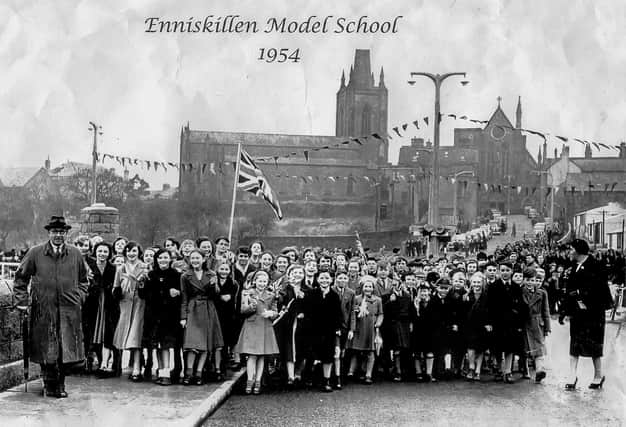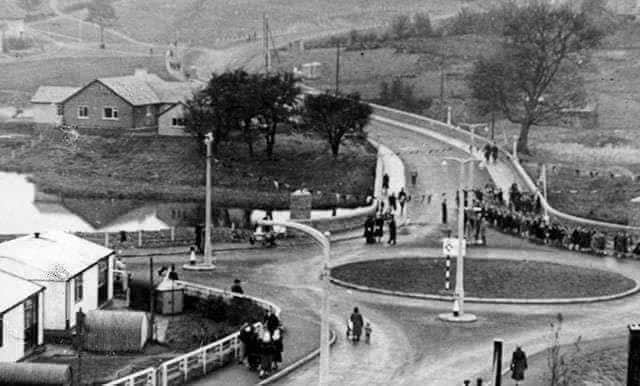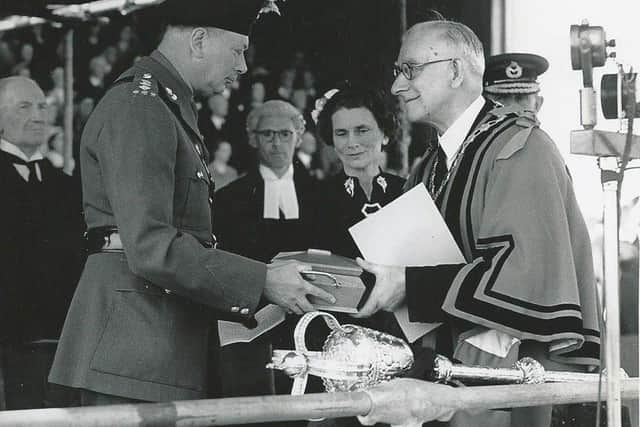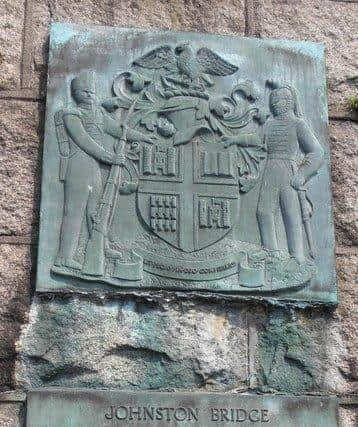There’s an ongoing call to light up the bridges on historic island town


The lush, liquescent landscape bred ubiquitous bridges, catering for road, rail and not uncommonly hooves - stone, steel, concrete and occasionally wooden structures which were so much a part of my childhood that they often went completely unnoticed.
Many Fermanagh folk crossed various bridges a dozen times a day for shopping, working, socialising and worshipping.
Advertisement
Hide AdAdvertisement
Hide AdI made five crossings on an average school-day, and often more to go fishing or berry picking on uninhabited islands, or to watch the Sligo steam-train puff under, or over, the three railway bridges close to our family home. (My first experience of tragedy was of a man on the back of a speeding lorry who didn’t duck going under one of them.)


As time passed I watched more bridges being built, or sadly, demolished by the demise of steam and I shared in the joyful ritual of throwing my school cap from the West Bridge into the river on way home from my last day at Portora Royal School.
Some of the bridges blend into riverside roadways making it difficult to tell where the bridge starts and the road ends, like Enniskillen’s Johnston Bridge and Queen Elizabeth Road complex, opened in the early 1950s.
Selwyn Johnston, a regular contributor to Roamer’s page, was brought up in a family-run riverside Guesthouse “in Henry Street,” he told me recently “overlooking Enniskillen Castle, the West Bridge (also called the Erne Bridge), Forthill and all the churches.”
Advertisement
Hide AdAdvertisement
Hide AdSelwyn has a long-lasting interest in these landmarks, particularly in floodlighting the buildings and bridges.


“I first proposed a floodlighting scheme to the Council in 1985 when I was in my early teens” he told me, “that these key buildings and landmarks should be floodlit, outlining the aesthetic benefits it would bring. #
“My mother operated a Guest House and we were eager to promote the town to the tourists.”
It was 1988 before the key buildings were lit but “unfortunately the floodlighting programme stopped short of lighting the bridges” Selwyn added, but he’s still very keen to get the Johnston Bridge floodlit.
Advertisement
Hide AdAdvertisement
Hide Ad“With Covid-19, our community has experienced one of the most traumatic periods in many generations,” he told me “and I hope that the lighting of the bridge may be considered as a beacon of hope for our community as they welcome brighter days ahead.”


Selwyn firmly believes that lights and bridges “are symbolically a sign of hope and this could be a way of sharing this within our community, at a time when it is needed most.”
When it was built, the Johnston Bridge had eight lampstands, and while there are only four remaining, they’re not working.
Selwyn has been writing more letters and talking to the powers that be and he hopes that the four missing lamps can be replaced, connected to an electricity supply, and all eight turned on at night.
Advertisement
Hide AdAdvertisement
Hide AdAs well as the usual challenges of bureaucracy and sourcing which public agency bears responsibility for the lampstands, “the other issue is who pays the electricity to run the lights and repair them if needed,” says Selwyn.
He reckons that the general public would like to see the lights back on and suggests that solar power could be used, supplied from the adjacent college.
Until the Johnston Bridge was built, the only access to Enniskillen town was by two bridges, the present East Bridge (1892) and the West Bridge (1885).
The Johnston Bridge was built in 1950 and then the Queen Elizabeth Road was constructed on the shore of the northern part of the island. The Queen Elizabeth (East) Bridge was opened in 1954.
Advertisement
Hide AdAdvertisement
Hide AdThe first proposals for this river crossing and the link road to Irvinestown goes back as far as the 1840s, and “it took over 100 years for Enniskillen to get The Johnston Bridge and the Cornagrade Road” Selwyn explained.
“With this the town got The Queen Elizabeth Road and The Ramp up to the East Bridge.
Two brilliant pieces of Engineering which blocked anything larger than a rowing boat or a canoe from a full trip around the only island town in Ireland!”
Selwyn tells me that the architect won an award for the road and bridges but “some people say that the planners at the time should have been put in prison!”
Advertisement
Hide AdAdvertisement
Hide AdHe explained that he has “personally presented the case to floodlight the bridges to representatives from both the Council and Roads Service. Unfortunately,” Selwyn continued “I have been unable to move this forward into fruition, but will continue to make representation to both the Road Service and Council.
“The issue is that the Roads Service own the bridge and do not see the lighting as essential. The council feel it is the Roads Service responsibility as they own the bridge.”
The Johnston Bridge was named in recognition of the part played by the Mayor of Enniskillen, Alderman W. E. Johnston, who got approval from the Government for its construction and a pair of plaques indicate that the bridge was opened on 15th November 1954 by the Rt Hon Viscount Brookeborough, CBE, MC, Prime Minister of Northern Ireland.
A message from the Editor:
Thank you for reading this story on our website. While I have your attention, I also have an important request to make of you.
Advertisement
Hide AdAdvertisement
Hide AdIn order for us to continue to provide high quality and trusted local news on this free-to-read site, I am asking you to also please purchase a copy of our newspaper whenever you are able to do so.
Our journalists are highly trained and our content is independently regulated by IPSO to some of the most rigorous standards in the world. But being your eyes and ears comes at a price. So we need your support more than ever to buy our newspapers during this crisis.
With the coronavirus lockdown having a major impact on many of our local valued advertisers - and consequently the advertising that we receive - we are more reliant than ever on you helping us to provide you with news and information by buying a copy of our newspaper when you can safely.
You can also enjoy unlimited access to the best news from across Northern Ireland and the UK by subscribing to newsletter.co.uk
Advertisement
Hide AdAdvertisement
Hide AdWith a digital subscription, you can read more than five articles, see fewer ads, enjoy faster load times, and get access to exclusive newsletters and content. Visit https://www.newsletter.co.uk/subscriptions now to sign up.
Thank you